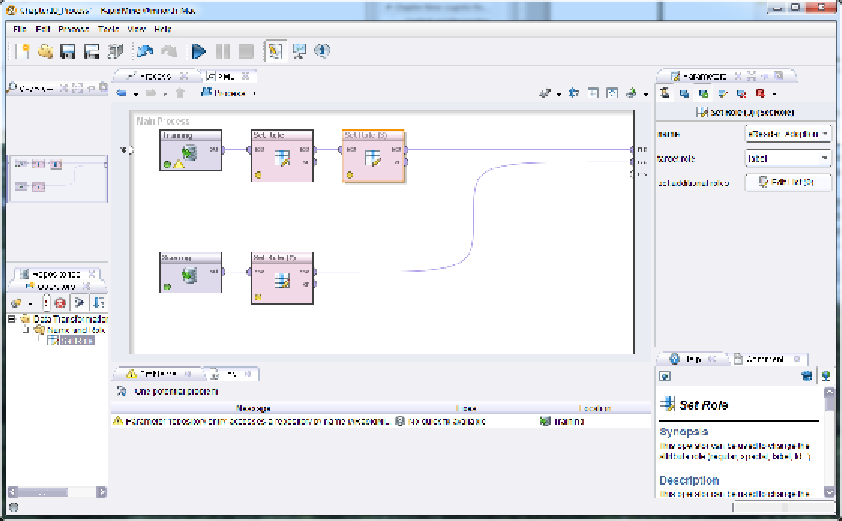Database Reference
In-Depth Information
4)
One of the nice side-effects of setting an attribute's role to 'id' rather than removing it
using a Select Attributes operator is that it makes each record easier to match back to
individual people later, when viewing predictions in results perspective. Thinking back to
some of our other predictive models in previous chapters (e.g. Discriminant Analysis), you
could use such an approach to leave in peoples' names or ID numbers so that you could
easily know who to contact during the deployment phase of data mining projects.
Before adding a Decision Tree operator, we still need to do another data preparation step.
The Decision Tree operator, as with other predictive model operators we've used to this
point in the text, expects the training stream to supply a 'label' attribute. For this example,
we want to predict which adopter group Richard's next-gen eReader customers are likely to
be in. So our label will be eReader_Adoption (Figure 10-4).
Figure 10-4. Setting the eReader_Adoption attribute as the label in our training stream.
5)
Next, search in the Operators tab for 'Decision Tree'. Select the basic Decision Tree
operator and add it to your training stream as it is in Figure 10-5.

